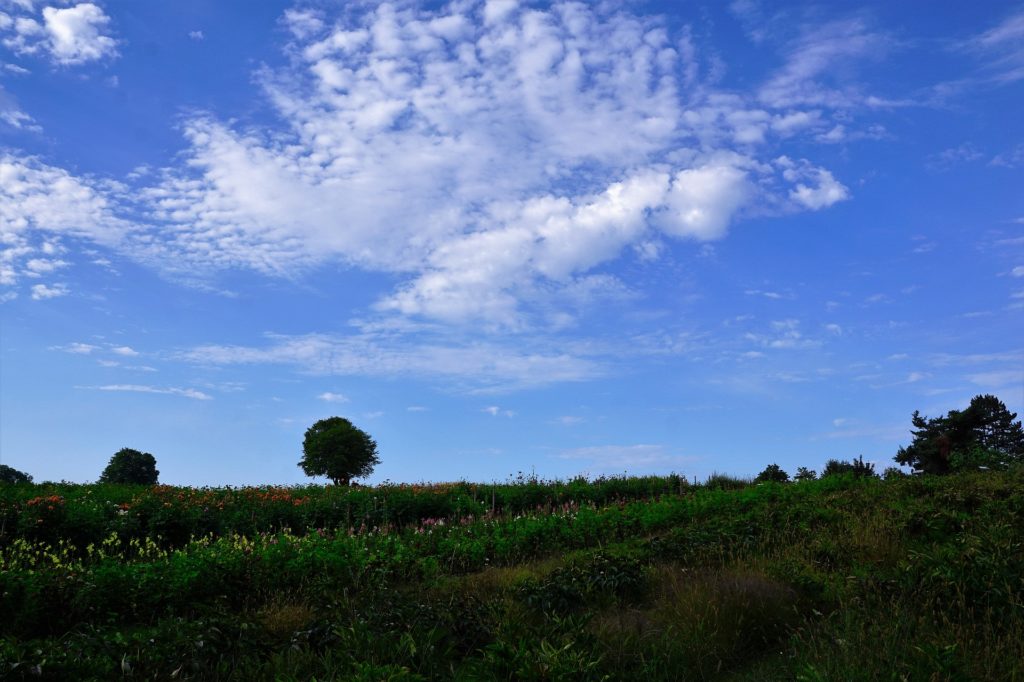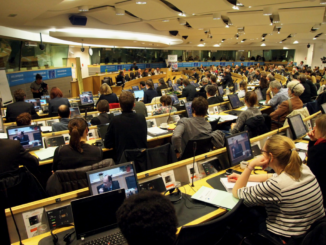
With trilogues in progress behind unacceptably closed doors, the Commission has released another document on eco-schemes. What is revealed in this document is some standard and expected good options, along with yet more weakening of the green elements of the CAP. Central to this is the new inclusion of a pet project of the Agriculture Commissioner – animal welfare. None of this bodes well for eco-schemes, more or less designed to replace the failed greening idea of the last CAP. While it’s a good sign that the Commission is still in the game, eco-schemes look to be in some trouble. They may yet end up with less of the CAP budget than even greening had. And with voluntary uptake for farmers, the traditional story of ever decreasing environmental ambition in the CAP seems to be occurring, whatever about the reality of severe ecosystem stresses like climate breakdown and biodiversity collapse.
Precisely what?
As recently as October of last year, the Commission released its list of four flagship eco-schemes. These were: agroforestry: agroecology; precision farming; carbon farming. Within these categories, we saw the following:
agroforestry: improved tree management, minimum tree densities.
agroecology: organic farming, land management practices, crop rotations, landscape features (beyond GAEC 9) land lying fallow, reduced grazing, flower strips.
precision farming: nutrient management plans.
carbon farming: evidence and results based emissions reductions.
Already we had pointed out that this list is too wide and should not be allowable under the Commission’s’ own CAP proposal. Precision farming should not be considered an eco-scheme as it simply does not fit the given criteria.
Precision farming is a means, or tool, rather than an objective itself – it is without proven and scientifically demonstrated improvements on the use of natural resources compared to other less capital intensive farming methods. Moreover, what’s suggested for eco-schemes as precision farming might be one among the other interventions under Pillar II (farm advisory services, installation of digital technologies) which are already envisaged in the new CAP. This is also a double funding risk because a farmer could receive support for nutrient management through eco-schemes or Farm Advisory Services.
In addition, precision farming simply does not fit with the forms of payments envisaged by the Commission in its legislative proposal. According to Article 28 part 6 (a) and (b) of the proposed regulation states that “support for eco-schemes shall take the form of an annual payment per eligible hectare and it shall be granted as either:
- payments additional to the basic income support as set out in Subsection 2 of this Section; or
- payments compensating beneficiaries for all or part of the additional costs incurred and income foregone as a result of the commitments as set pursuant to Article 65.”
In relation to the first point, support for precision farming could end up helping farms which – given their characteristics (size, crop, animal, farmers age) or farming methods – are already primed for this. This in itself would create even more disparities in the level of digitalisation across farms: its like giving money to already tech -savvy operators to keep doing what they do.
The same disparities might also arise in terms of farm incomes, with direct payments under eco-schemes flowing to the hands of the mainstream farming model mostly interested in optimising external inputs or productivity, instead of overhauling the current ecologically damaging system.
Precision farming is hardly justified as an eco-scheme also in relation to the second form of payment. If precision farming is communicated as a solution to reduce production costs, increase efficiency and profits, improve resource management – or at least is pitched as such – then why should farmers be paid for the additional supposed costs incurred and income forgone?
Basically, the two rationales are contradictory, unless one admits that precision farming is actually about creating additional costs for farmers, rather than the opposite. The question is also on whether public money should be spent to accelerate the commercial adoption by farmers of solutions offered by machinery, fertilisers, pesticides, nutrients providers – which risks embedding path dependency and its related problems. If the Commission and co-legislators really believe that better nutrient management plans will improve the quality of soils, water bodies, and production, this could be supported also by keeping the Farm Sustainability tool for Nutrients under GAEC 5 and supporting its adoption through farm advisory services.
see our series on agriculture and technologies
Moreover, if given the option of choosing just one, the tradition at member state level is to choose the green option that involves the least change. In the case of eco-schemes, precision farming would be that option.
Commission Proposes Four Flagship Eco-schemes – ARC2020 analysis
Pet projects
More has been added to the eco-schemes list. Animal welfare and, relatedly, antimicrobial resistance are introduced. An emphasis has been added by the Commission to the synergies with the European Green Deal in this five page Commission briefing, with four CAP Objectives named and seven areas of environment, climate and animal welfare actions under CAP Strategic Plans listed.
These are objectives on climate, water, air and soil management; biodiversity and animal welfare/antimicrobial resistance and related areas.
The named practices in the latest document are organic farming and IPM (Integrated Pest Management) as established practices and a range of other practices which are essentially similar to the previous list. These include nine agroecology options (e.g. crop rotation, winter soil cover, mixed swards etc), and options under agroforestry, HNV farming, carbon farming, precision farming, improved nutrient management, protecting water resources, soil management and other GHG related activities. The full document is available here.
Commission list of potential agricultural practices that eco-schemes could support
Many of these if used cleverly and with good intentions, will be fine. The biggest adjustment however, is the addition of seven options under husbandry and animal welfare options. These are worth listing in full:
- Feeding plans: suitability of and access to feed and water, feed and water quality analyses (e.g. micotoxines), optimised feed strategies (g)
- Friendly housing conditions: increased space allowances per animal, improved flooring (e.g., straw bedding provided on a daily basis), free farrowing, provision of enriched environment (e.g. rooting for pigs, perching, nest-building materials, etc.), shading/sprinklers/ventilation to cope with heat stress (b, g)
- Practices and standards as set under organic farming rules (g)
- Practices increasing animal robustness, fertility, longevity and adaptability, e.g. lifespan of dairy cows; breeding lower emission animals, promoting genetic diversity and resilience (a, b, g)
- Animal health prevention and control plans: overall plan for reducing the risk of infections that require antimicrobials and covering all relevant husbandry practices, e.g. crawl space between two rearing belts, vaccination and treatments, enhanced biosecurity, use of feed additives, etc. (g)
- Providing access to pastures and increasing grazing period for grazing animals (a, b, g)
- Provide and manage regular access to open air areas (g)
(Letters in brackets refer to areas under CAP SPs). As with precision farming much of this is laudable – however, and straightforwardly, much of this should not be admissible as eco-schemes. There are other parts of CAP and indeed national regulations that cover these areas. The first two relate to intensive indoor units, while the rest are mixed.
In a context where animal welfare provisions are being introduced anyway. So to use up eco-scheme money for the purposes of animal welfare means far less money for the areas eco-schemes were initially designed to help with. That this has come in so late, with seemingly no consultation, smacks of a Commissioner who has a well documented long and strong focus on animal welfare, shoehorning his own pet project into an area which clearly should not have it in there. This may be an unfair inference, but Wojciechowski is the former chair of the European Parliament’s animal welfare intergroup, regularly opines about animal welfare and CAP (for example here when candidate for the agriculture portfolio in 2019, and here when trying to connect up the Green Deal with CAP and animal welfare. In any case, with a chronic lack of transparency in the trilogues, we can but speculate in an informed way tha tthis is why eco-schemes are suddenly animal welfare-focused.
Even the October briefing from the Ag Commissioner Wojciechowski does not include this option. Yet at this late stage, somehow this option appears.
Again, this is not to critique animal welfare improvements per se: these should happen. It’s just the wrong place for them, with dire knock on consequences elsewhere.
Sources ARC has spoken with see the first two animal welfare options here, on feed and housing, as simply a subsidy for factory farming. Many of these changes would marginally improve the living conditions of animals in the most intensive units. Ironically, they will then take up more space and, by the logic of much climate-only accounting, they will be less environmentally sound by taking up this larger amount of space.
There are counter arguments that can be made, for example in outdoor extensive organic farming, from a wider environmental perspective and also, depending on whether a per hectare or per kg climate accounting approach is taken, from a climate perspective. However in the case of marginal improvements to intensive units, there is no climate or wider environmental benefit.
Member states with a large number of intensive units will likely rush towards these eco-scheme options and thus spend even less on managing the farmland of Europe – which is about half of the total land area – in a more environmentally sound manner.
Also eco’s
For the rest of the husbandry and animal welfare options, the sequence is backwards – these are animal welfare options that also have an environmental dimension, by luck or coincidence. Conceptually, with so much of the non human world being farmed animals, there is an argument to be made that farmed animals, unfortunately, _are_ most of what is considered under the term ‘the environment’. This philosophical consideration notwithstanding, the general point remains that introducing animal welfare means excluding much worth supporting under this specific part of the CAP.
This is even more the case with the Council itself suggesting just 20% of the CAP budget for eco-schemes: down from Greening’s paltry 30%. And remember, greening was an already abject failure according to the European Court of Auditors and countless other experts. (See below this article for a long list of such evidence)
What could actually work as eco-schemes?
Alan Matthews and Norbert Röder went into detail examining eco-schemes recently. In an excellent analysis, well worth reading in full, they poured much cold water on the likely efficacy of eco-schemes and their likely uptake. Meticulously examining what makes sense for one year schemes – which eco-schemes will be – while taking into account the potential for well written multi-annual schemes, Matthews and Röder conclude that the following five make sense as eco-schemes:
- crop diversification
- landscape fragmentation (smaller plots)
- orphan crops with environmental benefits, (rough) pastures, unmanaged grass strips
- stubble fields
- ban on pesticides on arable land.
Simply put, the rest do not make sense ecologically in the context of a one year scheme: they would either not be chosen or they would be chosen and have little environmental impact. For example, carbon farming – already hard to define – would take years to have an impact. While Germany stands out as having a good record with multi-annual schemes, in general, one year schemes suit these five farming actions, if the aim is to have a strong positive environmental impact. (And unfortunately, that’s a big if when it comes to the EU institutions and their environmental focus.)
Matthews and Röder also add more that’s worth unpacking. For example, they emphasise multiannual implementation: “Multi-annual fallows and flower strips are much more suitable for an implementation in eco-schemes compared to agro-forestry and carbon farming as the share of installation cost on the total costs (given a five-year duration) is much lower.” They also refer to measures “for which it is unlikely farmers will significantly adjust the size or area on an annual basis” including “the promotion of organic farming, low input grassland management, or a ban on mineral fertiliser. At the plot level sensible measures include result-based payments for flower rich meadows or for permanent low input systems”
They also add that “if measures are targeted at the level of the farm or at least the branch of farming, some further measures become sensible as farmers rarely adjust these levels annually. This would include a ban on mineral fertiliser and pesticides or reduced management intensity on grassland.” Finally they focus on “measures where the outcome depends crucially on weather conditions” – such as mechanical weeding depending on the season and weather – similarly with levels of pesticide or fertilizer use.
Substantially Matthews and Röder are correct. However, perhaps there are more nuances. For example, while agroforestry is very unlikely to be taken up in a one year scheme, better hedgerow management could conceivably be introduced and make an impact year-on-year. This however, involves existing trees not new trees, clearly. So for example in the phrasing “establishment and maintenance of landscape features above conditionality”, maintenance may make sense whereas establishment is extremely presumptuous, because, simply put, trees take a long time to grow and involve long term thinking – and financial support – as a result. This doesn’t suit a one year scheme. And even then, improving the biodiversity performance of hedgerows is what we really need – and that isn’t indicated in the wording. Below you can see a video of excellent hedgerow management, the kind that should receive extra funding as an eco-scheme.
(To be fair, Matthews and Röder point to mixed signals from the Commission on agrro-forestry as a category, as regards what even is included or includable, in their analysis.)
There is also an issue with the repeated reference to organic farming. This confuses matters as organic farming is a five year scheme in Pillar two. While some organic practices should come in under eco-schemes, and this could help prepare farmers if they are interested in joining the organic farming scheme, these should be named specifically without significant reference to organic farming. This could lead to confusion for consumers if the word – which is protected unlike so many generally nice words around agri-food – is used in both Pillar one and Pillar two contexts.
Con-clusion
All of this said, it is nonetheless interesting that this factsheet has come out from the Commission. While its legal status is ponderable, it does at least suggest the Commission is being creative and active in the trilogues, which has certainly not always been the case. Obviously, we’ve listed primarily concerns above, and further questions can arise along the way (e.g. how to check the consistency with AECM schemes in Pillar II). However, we should recognise the efforts put forward, although very late in the legislative procedure. At least, this latest communication is better than nothing. If the member states were to interpret eco schemes in their own manner exclusively, this could well have worked out worse.
We suggest that it’s possible to not only improve the list by excluding certain practices or adding some cross-cutting conditions for all eco-schemes to avoid certain risks (e.g. supporting maintenance of organic farming for farmers who are not fully certified or in compliance with the EU organic regulation), but also to give a legal value to this fact sheet. Is it via this nice looking five page factsheet that we expect to regulate the new CAP reform in line with the European Green Deal Objectives? We need to put ink on paper and fix the indications on eco-schemes in the legal acts in order to ensure coherence across the Member States.
More
Auditors on CAP
CAP | Billions Spent on Biodiversity with Little Impact – Auditors
CAP and Biodiversity | Wake-Up Call For Green Deal Commission?
ARC Exclusive – Auditors Heavily Criticise Commission’s CAP Plans
Scientists on CAP
The Common Agriculture Policy and Sustainable Farming: A statement by scientists (December 2020)
22 Scientists say CAP Communication “fails to address main agricultural challenges”
EU Subsidies Benefit Big Farms While Underfunding Greener and Poorer Plots – New Research
CAP ecological focus areas didn’t work either
Reviewing Ecological Focus Areas: A Cross Pollination of Ideas
Ecological Focus Area in Germany: What Influences Farmers’ Decisions?
CAP | How Does Commission’s Proposed Eco Scheme Compare to Greening?
CAP in France not Delivering for Citizens, Farmers or the Environment
The Council and Parliament weakening CAP’s environmental credentials
CAP | Kloeckner Launches Direct Attack on GAEC 9, Eco-Schemes and Green Deal
CAP | Parliament’s Political Groups Make Moves as Committee System Breaks Down
Parliament – Big Three Political Groups Try to Scupper CAP Eco-Schemes
Eco-Scheming | Council Adopts a CAP Position of no Ecological Substance






